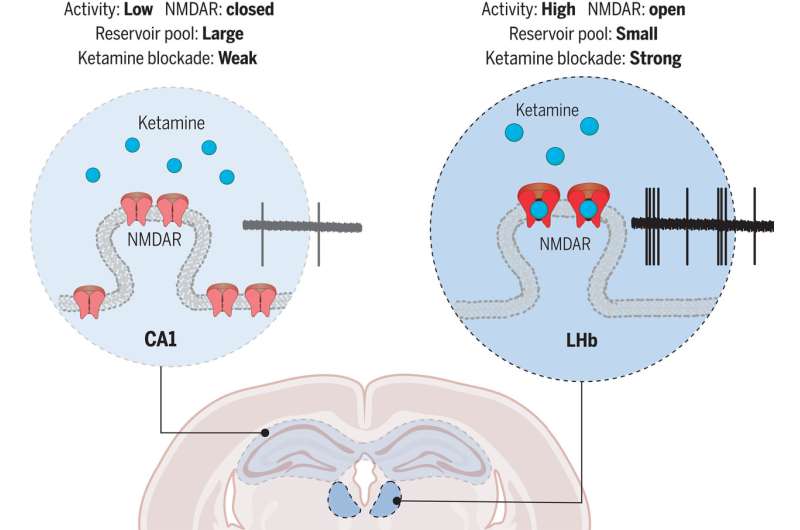August 28, 2024 report
This article has been reviewed according to Science X's editorial process and policies. Editors have highlighted the following attributes while ensuring the content's credibility:
fact-checked
peer-reviewed publication
trusted source
proofread
Uncovering the mechanics behind ketamine's rapid antidepressant effects

A team of brain and mental health specialists in China and the U.S. has uncovered some of the mechanics behind ketamine's rapid antidepressant effects. In their study, published in the journal Science, the group administered ketamine to depressed mouse models.
Jose Cesar Hernandez Silva and Christophe Proulx, with Universite Laval, in Canada, have published a Perspective piece in the same journal issue outlining the history of ketamine use in treating depression, and the current findings.
Depression is a condition experienced by most people at some point. When it becomes more frequent than usual, patients require treatment. Current treatments include therapy and traditional medications.
More recently, researchers have explored the use of ketamine to treat depression due to its ability to help people overcome depression symptoms much more quickly than traditional medications. Prior research has shown that it does so by acting as a noncompetitive antagonist of the N-methyl-D-aspartate receptor (NMDAR), but how it does so is still not known.
In this new study, the research team conducted experiments that involved giving ketamine to mice induced to express depressive symptoms to see what impact it had on their brains.
The experiments involved stressing lab mice using restraints until they began to exhibit depression-like symptoms. Some of them were given ketamine injections while others, serving as controls, received saline. The researchers then measured synaptic currents in the cells with NMDARs in the hippocampus.
They studied the brains slice by slice using in vitro electrophysiology and made in vivo tetrode recordings as a means of measuring basal bursting and firing rates. The researchers found that injecting the mice with ketamine effectively blocked NMDAR currents in the lateral habenula but not those associated with neurons in the hippocampus.
The research team concludes that this helps to explain why ketamine is able to alleviate depression symptoms so quickly.
More information: Min Chen et al, Brain region–specific action of ketamine as a rapid antidepressant, Science (2024). DOI: 10.1126/science.ado7010
Jose Cesar Hernandez Silva et al, Locking away depression, Science (2024). DOI: 10.1126/science.adq9566
© 2024 Science X Network



















